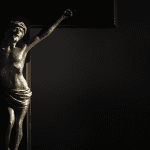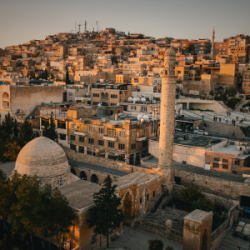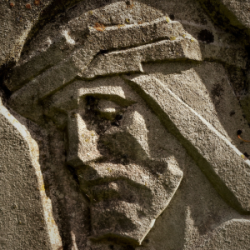Welcome readers! Please subscribe through the button on the right.

Our reading this week is from the book of John:
The next day John saw Jesus coming toward him and said, “Look, the Lamb of God, who takes away the sin of the world! This is the one I meant when I said, ‘A man who comes after me has surpassed me because he was before me.’ I myself did not know him, but the reason I came baptizing with water was that he might be revealed to Israel.” Then John gave this testimony: “I saw the Spirit come down from heaven as a dove and remain on him. And I myself did not know him, but the one who sent me to baptize with water told me, ‘The man on whom you see the Spirit come down and remain is the one who will baptize with the Holy Spirit.’ I have seen and I testify that this is God’s Chosen One.”
The next day John was there again with two of his disciples. When he saw Jesus passing by, he said, “Look, the Lamb of God!” When the two disciples heard him say this, they followed Jesus. Turning around, Jesus saw them following and asked, “What do you want?” They said, “Rabbi” (which means “Teacher”), “where are you staying?” “Come,” he replied, “and you will see.” So they went and saw where he was staying, and they spent that day with him. It was about four in the afternoon. Andrew, Simon Peter’s brother, was one of the two who heard what John had said and who had followed Jesus. The first thing Andrew did was to find his brother Simon and tell him, “We have found the Messiah” (that is, the Christ). And he brought him to Jesus. Jesus looked at him and said, “You are Simon son of John. You will be called Cephas” (which, when translated, is Peter).” (John 1:29-42)
John the Baptist’s relationship with Jesus evolves through the four gospels in our sacred canon. By the time of this last written gospel, Jesus goes from being a disciple of John’s to being someone John didn’t even know: John merely prepares the way for Jesus. (Luke gospel is also different; see Luke 7:18-20.) In this week’s passage, John uses the unique language of Jesus being the “lamb of God.” This language developed late in the early Jesus community, and different ways of explaining Jesus’ death coexisted alongside each other. We’ll discuss the image of Jesus being God’s “lamb” more in a moment.
First, though, it is helpful to understand some of the political context in which John was written. The early Jesus community was establishing its authorities and choosing leaders to rally around. Peter’s leadership is referenced in this week’s reading.
The synoptic gospels juxtapose Peter’s denial of Jesus with Peter’s confession, the first in the gospel stories, that Jesus is the “messiah”: “But what about you?” Jesus asks Peter in Mark 8:29. “Who do you say I am?” Peter answers, “You are the Messiah” (see also Matthew 16:16 and Luke 9:20).
John’s gospel affirms and expands this tradition:
Simon Peter answered him, “Lord, to whom shall we go? You have the words of eternal life. We have come to believe and to know that you are the Holy One of God.” (John 6:68-69)
In Matthew, Peter’s confession is even more significant: it becomes a foundation of the community that forms around Jesus:
Simon Peter answered, “You are the Messiah, the Son of the living God. Jesus replied, “Blessed are you, Simon son of Jonah, for this was not revealed to you by flesh and blood, but by my Father in heaven. And I tell you that you are Peter, and on this rock I will build my community (ekklesia), and the gates of Hades will not overcome it. (Matthew 16:16-18)
So much has been written on the wordplay in this passage, and the relationship between Peter’s name (petros) and the rock (petra). Through this story of Peter’s confession of Jesus as the “messiah,” people in the early Jesus movement are endeavoring to establish their preferred authorities. Peter’s confession of Jesus’ messiahship was especially important to the community that recognized and followed Peter’s apostleship.
There are a few minor differences between the early gospels’ story of how these men became apostles and John’s later version. In John, they begin following Jesus at the Jordan. In earlier gospels, they meet him in Galilee on the seashore.
“This all happened at Bethany on the other side of the Jordan, where John was baptizing.” (John 1:28)
“The next day Jesus decided to leave for Galilee. Finding Philip, he said to him, ‘Follow me.’” (John 1:43; emphasis added)
“As Jesus walked beside the Sea of Galilee, he saw Simon and his brother Andrew casting a net into the lake, for they were fishermen.” (Mark 1:16)
Now let’s discuss Jesus being the lamb of God. We’ll begin that discussion, next.
(Read Part 2)














